
Some Like it Hot – submitted by Mary Dawn Pugh
Not that I’m any kind of Marilyn Monroe, but I do love hot-season gardening. Some of the best things to grow (in my humble opinion) are already ripening in May – and going full speed into June. The tomatoes are getting ready to pick, and the cucumbers, squash, and zucchini have already started to produce. I even harvested a purple bell pepper this week. Slicing fresh cucumber, zucchini, and yellow squash to dip in hummus is a special – and healthy – treat!
That being said, May days are already approaching or passing up 90 degrees, so any vegetables planted in May or later must tolerate the extreme heat of the New Orleans summers. (Dan Gill, “Set Your Garden Aflutter,” Times Picayune Inside Out, May 7, 2011). Some hot-weather vegetables that a gardener can plant now include cantaloupe, cucuzza, eggplant (especially the long Oriental types), Malabar spinach, edamame, Southern peas, hot peppers, lima beans, luffa gourd, mirliton, okra, sweet potato, and watermelon. (“Set your Garden Aflutter”).The LSU Ag Center website provides a Vegetable Planting
Guide that includes both suggested planting dates for these plants, as well as recommended varieties, at www.lsuagcenter.com, (click on Lawn and Garden, then Home Garden, then Vegetables to find a link to a PDF copy). Further, LSU’s Dr. Kathryn Fontenot notes that you can get a head start for Halloween and Thanksgiving decorations by planting your pumpkin seeds in July so as to be ready for the fall pumpkin-decorating season!
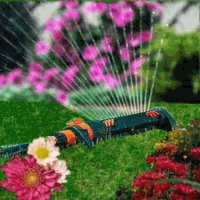
When asked what her best advice for summer gardens would be, Dr. Fontenot replied that Louisiana summers are hot and humid so remember to water your garden well! Most vegetables need an inch per week. She suggests to water at the base of the plants and if tomatoes are your crop, to water regularly. Infrequent heavy watering can cause tomatoes to split when they reach breaker point. She also recommends to keep dead or decaying matter out of the garden so as not to attract pests and disease.
If you love experimenting with different varieties of tomatoes, the LSU Ag Center provides an article that may be right up your alley. The article describes a study that tested 12 varieties for yield and taste. Find a copy of the article with links to the study itself at www.lsuagcenter.com, (click on Lawn and Garden, then Home Garden, then Vegetables to find a link to a PDF copy). The three varieties that produced the greatest number of tomatoes were Italian Ice, Patio Princess and Health Kick. The top three tomatoes for pounds of tomatoes were Super Tasty, Health Kick and Patio Princess. Forty taste testers sampled the produce, and the Heat Wave II variety won the best-tasting tomato award. The author of the study also recommends the Sweet Tangerine variety, as it produces good yield as well as beautiful color inside and out.
Dr. Fontenot notes that most people like Celebrity and Brandywine tomatoes – but that the bottom line is that any tomato that comes out of your garden is the best tasting because it was ripened on the vine.
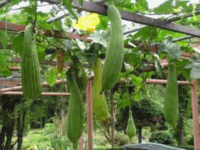
Grocery store tomatoes are artificially ripened and therefore don’t have the same flavor as backyard tomatoes. In two studies Dr. Fontenot recently conducted, Health Kick won the best tasting tomato grown in container, while the BHN 961 variety won best-tasting in the field study.
Lastly – for something many of us may never have tried – Dan Gill recommends trying luffa in the home garden. (“Set Your Garden Aflutter,” Gardening Month by Month). An edible gourd, it is related to cucumbers and squash, and needs a trellis for growing. The vine will stay healthy during the summer, producing large yellow flowers. Harvest the fruit to eat, fry, and enjoy an okra-like dish. (Gardening Month by Month). If some gourds remain on the vines until they turn brown and rattle when shaken, the gardener will find inside the outer skin a natural luffa sponge!
General Horticultural Hints, June 2011 – submitted by Karen Blackburn
Dry Season in the Garden – Even though the Mississippi River is at flood stage, it is surprising that our gardens are bone dry. To protect our investments and beloved gardens, we have to be prepared to water our gardens. Mother Nature can be harsh but we can use our common sense when it comes to helping our gardens along. It is not always in our best interest to water by hand. We simply cannot water as well as Mother Nature. Use a sprinkler. The cheap ones work just fine. Most plants will do well with 1 inch of water per week. Simply put out a tin can or bowl, mark it at 1 inch from the bottom with a marker and sit the can directly in the garden area being watered. Watch the time and stop watering that area once the can is filled to 1 inch. Now, you know how long to water your garden or lawn. Potted plants may need to be watered daily or twice daily. Water deeply for best root growth, once watered, the water should drip from the bottom of the pot. Read your plant label recommendations or simply stick your finger in the soil to test for dryness.
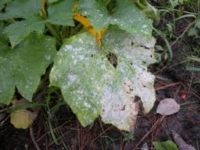
Pests and Diseases in the Garden – Continue to monitor pests and diseases in the garden and treat for specific problems. Plants can be more susceptible to problems due to drought situations. Some pest damage in the garden is okay. Observe your plants and simply pick pests from your plants by hand. Horticulture oils and insecticidal soap work well for pests but use them during cooler times of the day such as early morning or late evening to avoid extreme heat which can hinder the effects of the oil. Also be sure to use a summer or ultra-fine oil when temperatures are hot. The heavier oils can damage your plants! Use a fungicide for powdery mildew. Clean garden tools regularly to avoid the spread of disease by wiping with a weak bleach solution or rubbing alcohol between uses on infected plants.
Deadheading Flowers Important, But Often Neglected – Deadheading is an important but often neglected gardening practice. It refers to pruning off old, faded flowers from a plant as it blooms. It is most often done to annuals and herbaceous perennials, but dead heading also is useful with some summer-flowering trees and shrubs. There are a number of advantages to deadheading that make it worth the time and effort it involves. For one thing, it improves the appearance of a plant by removing unattractive dead flowers and seed pods that are mixed with the newly opened blooms. Deadheading also will encourage annuals to bloom more and for a longer period. Many perennials will be encouraged to send up another flush of flowers if they are promptly dead headed. In addition, for annuals and perennials that self seed, deadheading prevents unwanted seedlings from popping up all over the garden. While you are deadheading, take the opportunity to groom your plants by removing damaged, unattractive foliage and dead stems or branches. Not only is this better for the plants, it also keeps them looking their best. The plants that respond best to deadheading by extended flowering are annuals and perennials that bloom over a relatively long season and some summer-flowering trees and shrubs such as crape myrtle, vitex, roses, oleander and althea.
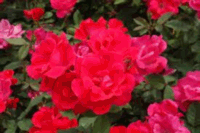
Knock out Gardening – The ‘Knock Out’ rose is a landscape rose that fits perfectly into a sustainable, low maintenance landscape. This rose is a real work horse in the landscape, providing lots of color. It does this by producing flushes of flowers repeatedly from April to November. Like most roses, best flowering is in the spring/early summer and fall. Knock Out roses are relatively pest resistant and generally do not require spraying. Insect and disease problems may appear, but these vigorous, robust roses generally get over these problems without help from the gardener. In addition to the original red Knock Out rose, there is a Pink Knock Out, Blushing Knock Out, Double Knock Out and Pink Double Knock Out that perform just as well. Sunny Knock Out has light yellow flowers. Rainbow Knock Out has not performed as well as the other types in LSU AgCenter trials. Like other roses, Knock Out roses need full sun and well-pre pared, well-drained landscape beds. They prefer a soil pH between 6.0 and 6.5. After their first growing season in the ground, Knock Out roses require minimum irrigation (many gardeners kill these roses with kind ness). Fertilize lightly in March and August. Prune the shrubs back in early February by about one-third to encourage branching and fullness. They may be pruned again in late August.
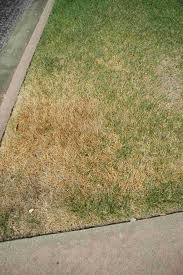
Lawns – Watch for chinch bugs in St. Augustine and Bermuda grass lawns and treat with an LSU AgCenter recommended insecticide. Chinch bug problems show up as yellow-brown areas of the lawn during hot and dry weather. These insects extract plant juices from turfgrass stems and crowns while pumping toxic salivary fluids into the plant. The fluids disrupt the plant’s vascular system. Check for chinch bugs in the lawn by saturating suspected areas with a gallon of water mixed with a few squirts of lemon dishwashing soap. This soapy solution irritates chinch bugs and brings them up near the grass surface so you can determine if the bugs are causing the lawn damage. Additional insect problems that appear during the summer include armyworms and tropical sod webworms. These moth larvae or “worms” can cause severe lawn damage very quickly and will need to be killed with insecticides to prevent further damage. Be mindful of these pests as you walk through your lawns. Investi gate damaged areas and treat accordingly.
Summer Vegetables – During the month of June, continue to plant the same plants you started from the May newsletter. Transplant heat-set tomatoes, they will continue to produce fruit from August through October. Collards, cucumbers, melons, cantaloupes, okra, southern peas, pumpkins and summer squash are good to plant. Transplant eggplants, peppers (bell and hot) and sweet potato slips. Start seed of fall tomatoes and bell peppers. Good pest control practices are a must because of the high pressure of insects, diseases and our present drought situation.
Squash and cucumbers can be planted in June, July and August. Summer plantings normally will be ready to begin harvesting after about six weeks. Yields usually are lower than spring plantings. A fall crop of yellow summer squash, zucchini and cucumbers can be grown by planting seed during August. Squash vine borers may be a more severe problem during fall than spring, so be prepared to control them with an insecticide. Viruses are a problem during the fall. New cucumbers are Daytona and Stonewall. New squash are Medallion, Fortune, Lioness, Justice, Lynx and Leopard.
